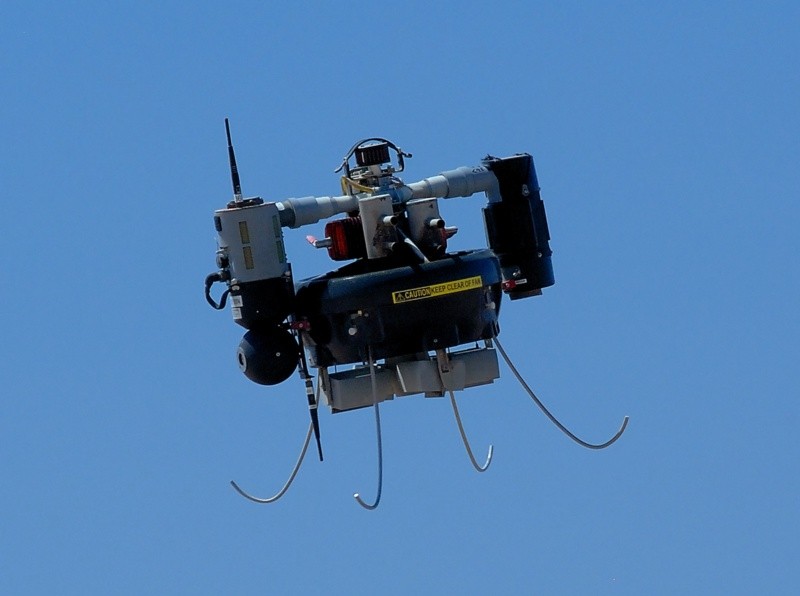The U.S Army is making rapid progress implementing reliability and performance "fixes" into its set of Increment 1 technologies slated to enter service with Early Brigade Combat Teams by 2011 --- robots, sensors and UAVs networked together to give soldiers at the platoon and company level seamless connectivity and unprecedented combat-zone awareness, service leaders said.
Some of the fixes involved tweaking the hardware, such as repairing parts on the Small Unmanned Ground Vehicle (SUGV), said U.S. Army Maj. Gen. John Bartley, Program Executive Office Integration.
"The number of hardware fixes is going down. We think we have the hardware mostly done. We think the fixes will be more on the software side. Now we are focused on the ability to take the software to the next level," Bartley said.
The Army, which will make its case to Pentagon officials at an upcoming Defense Acquisition Board meeting April 2, is making fixes as it gets ready to enter Low Rate Initial Production for its first set of equipment; Increment 1 technologies include the Unattended Ground Sensors, Small Unmanned Ground Vehicle (SUGV), Non-Line-of-Sight Launch System, and Class 1 UAS along with network technologies aimed at linking the nodes together and distributing voice, video and data across the force in real-time.
Many of the needed repairs have been taking place following a Limited User Test (LUT) in 2009 which put the technologies to the test in combat-like circumstances; technical field tests and another LUT are scheduled for later this year as part of a four-year incremental development planned aimed at fielding the technologies by 2011. The Army, which does not intend to field the technologies before the equipment is proven to be reliable and ready, will request approval for funding for two additional brigades later this year, Bartley said.
"We are asking for two more brigades after LUT 2010. We are incrementally asking for more as reliability improves," said Bartley. "What we try to do is bring progressive improvements as we go forward."
The Army is committed to a test-analyze-fix process involving the technologies and will not field any of the systems until they are combat-ready, said Lt. Gen. Robert Lennox, Deputy Chief of Staff of the Army, programs.
Lennox said the Army agrees with the Government Accountability Office's recommendation suggesting that the technologies not be fielded until the reliability issues are successfully addressed.
"If the capabilities don't pass the test we will not field them in the Army. We agree with these [GAO] concerns. We're committed to and --- on a path to -- fixing these reliability concerns. These technologies are things warfighters have said they need in combat," said Lennox.
In fact, soldiers training with the equipment with the Army Experimental Task Force (AETF) at Fort Bliss, Texas, said the Increment 1 technologies could make a big difference in combat.
"If I was deploying my brigade today, I would take the SUGV and the Class I UAS as is. They provide additional information and take some of the uncertainty out of the equation," said U.S. Army Col. Randy Lane, AETF commander.
The AETF is comprised of many soldiers who have recently returned from combat, Lane said.
"We represent soldiers in the field. 60-percent of our forces are combat veterans who know the best TTPs [tactics, techniques and procedures]. Those soldiers bring that experience regarding what exactly is needed in a combat environment," said Lane.
The two-foot long, 18-pound, hover-and-stare vertical-take-off Class 1 UAS would be particularly helpful in urban combat environments, Lane said.
"The hover capability allows you to operate closer to your objective. It would work well in places like downtown Baghdad and Kandahar where you could move them through urban canyons. With the Class I system, I can get a horizontal look into a window or onto a rooftop. You could even see someone inside a window of a building," said Lane.
Also, the Army is evaluating a "muffling" device designed to mute the 70-decibel noise emitting from the Class 1, Bartley said. At the same time, AETF soldiers said there is often background noise in urban environments which would offset the sounds of the Class 1 UAS. Also, the AETF soldiers testing the Class 1 UAS came up with tactics, techniques and procedures such as using the system at night which mitigated the negative effects of the noise -- turning it into a tactical asset.
"At night it confused them [the enemy forces in a test] . They could hear it but had no idea where it was coming from. This keeps the enemy from moving and enhances our own ability to maneuver," Lane said.
Also, the Class I UAS was incorporated into an "electronic wingman" live-fire exercise with an Abrams main battle tank, Lane said.
"The Class I was hovering above a tank. Meanwhile, there was a display module showing the feed inside the vehicle allowing the crew to look at targets and direct fire engagements, making them more precise," said Lane.


Social Sharing